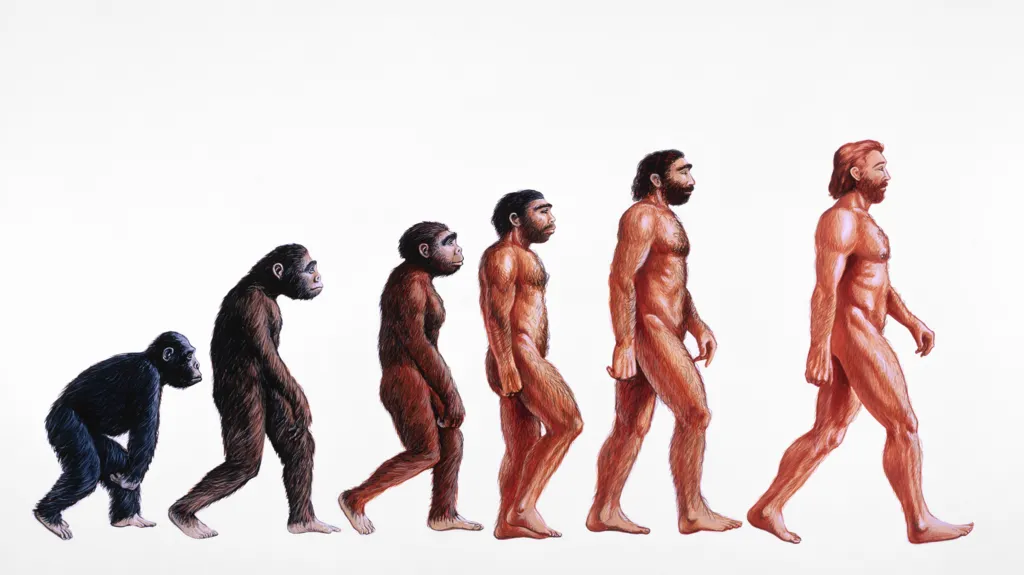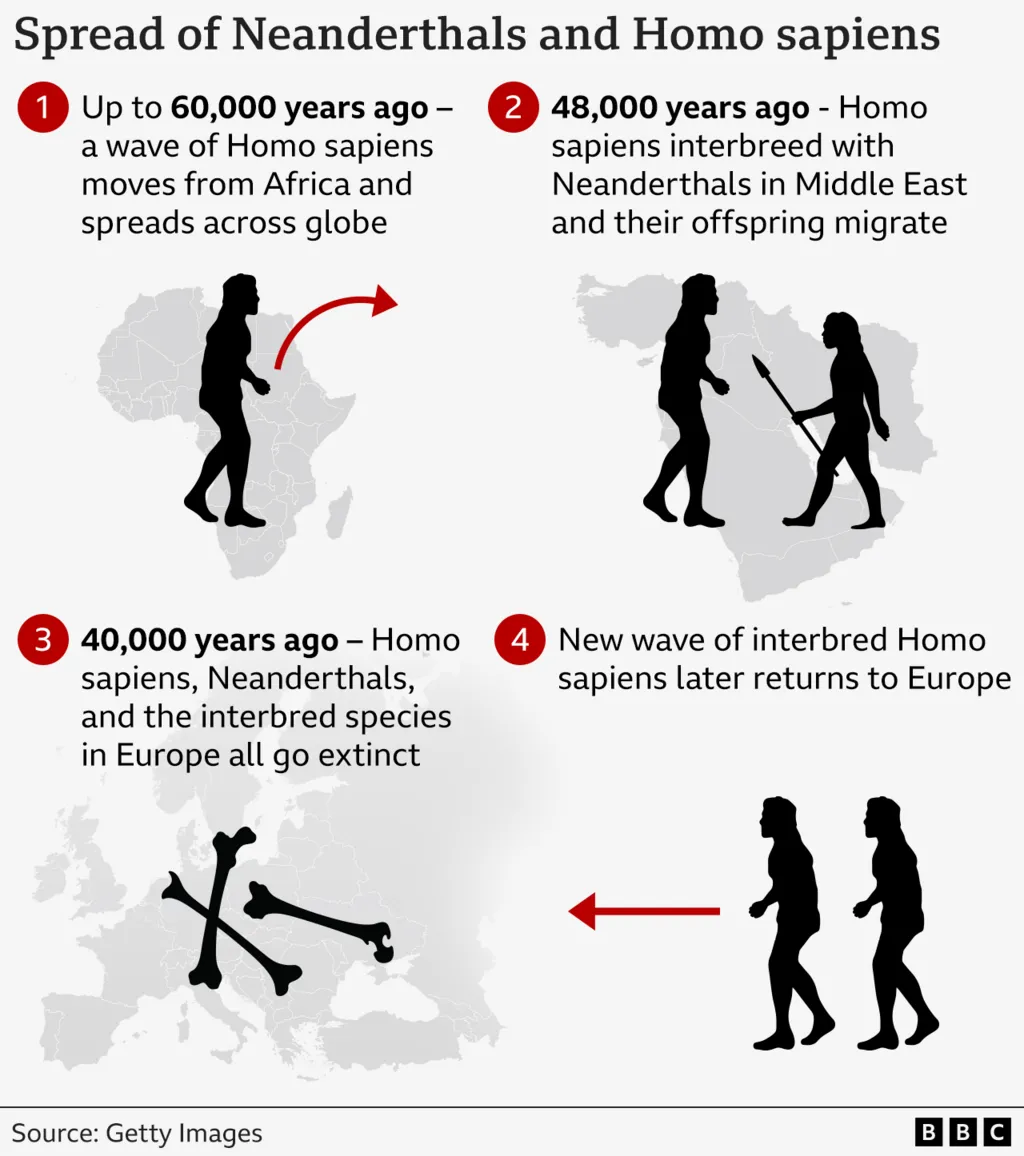Humans Might Not Have Survived Without Neanderthals
New DNA research has revealed that early humans didn’t have the smooth success story we once thought. In fact, modern humans faced multiple extinctions before thriving across the globe—and Neanderthals played a crucial role in our survival.
For years, it was believed that Homo sapiens dominated Neanderthals after leaving Africa. However, new studies suggest that only those early humans who interbred with Neanderthals managed to survive, while other bloodlines died out. These interbreeding populations likely gained crucial genetic traits, such as stronger immune defenses, which helped them adapt to unfamiliar diseases in new environments.
The research, led by Prof. Johannes Krause from the Max Planck Institute of Evolutionary Biology, has rewritten our understanding of human history. “Modern humans were not initially a success story,” Krause told BBC News. “We went extinct multiple times before we thrived.”
The Key Interbreeding Period 48,000 Years Ago
Around 48,000 years ago, Homo sapiens interbred with Neanderthals in Europe, marking a turning point in our evolution. This brief period of interbreeding may have been essential for the success of modern humans, allowing us to expand into new territories.
Before this interbreeding, humans had ventured out of Africa, but those populations did not survive. It was only after mixing with Neanderthals that they began to spread across the globe.
However, even after the interbreeding, the early humans who lived alongside Neanderthals in Europe eventually died out around 40,000 years ago. Despite this, their descendants—who had already spread beyond Europe—eventually returned to repopulate the continent.

Neanderthal Extinction: Environmental Factors at Play
A major question surrounding Neanderthal extinction is why they vanished so soon after Homo sapiens arrived in Europe. While some have speculated that humans hunted Neanderthals to extinction or had superior intellect, new evidence points to environmental factors.
Prof. Krause explains that both Neanderthals and humans faced extinction in the same period, suggesting that it was the unstable climate of the time—shifting between cold and warm spells—that played a role in both species’ disappearance. Neanderthals, with their smaller population and lower genetic diversity, were particularly vulnerable.
Prof. Chris Stringer of the Natural History Museum in London adds that climate instability could have been a tipping point. “Neanderthals were fewer in number and had less genetic diversity than the modern humans they lived alongside. It may not have taken much to push them over the edge.”

Neanderthal DNA: A Key to Our Survival
Research has shown that modern humans inherited some essential genetic traits from Neanderthals—most notably related to immune function. When humans first left Africa, they were highly susceptible to diseases they’d never encountered before. By interbreeding with Neanderthals, early humans gained immune protection that helped them survive in new environments.
Prof. Stringer suggests that Neanderthal DNA provided humans with a “quick fix” to their immune systems. “Neanderthals had evolved in the harsh climates of Europe, while humans had evolved in Africa,” he says. “By mixing their genes, we gained adaptive capabilities that helped us thrive outside Africa.”
These findings highlight the vital role Neanderthals played in the survival and success of modern humans, reshaping our understanding of how we became the dominant species on Earth.
This article was rewritten by JournosNews.com based on verified reporting from trusted sources. The content has been independently reviewed, fact-checked, and edited for accuracy, neutrality, tone, and global readability in accordance with Google News and AdSense standards.
All opinions, quotes, or statements from contributors, experts, or sourced organizations do not necessarily reflect the views of JournosNews.com. JournosNews.com maintains full editorial independence from any external funders, sponsors, or organizations.
Stay informed with JournosNews.com — your trusted source for verified global reporting and in-depth analysis. Follow us on Google News, BlueSky, and X for real-time updates.














